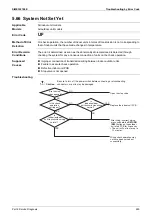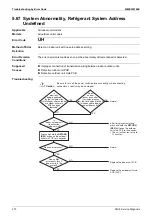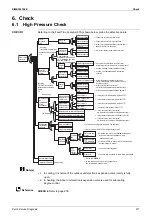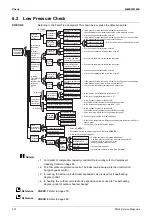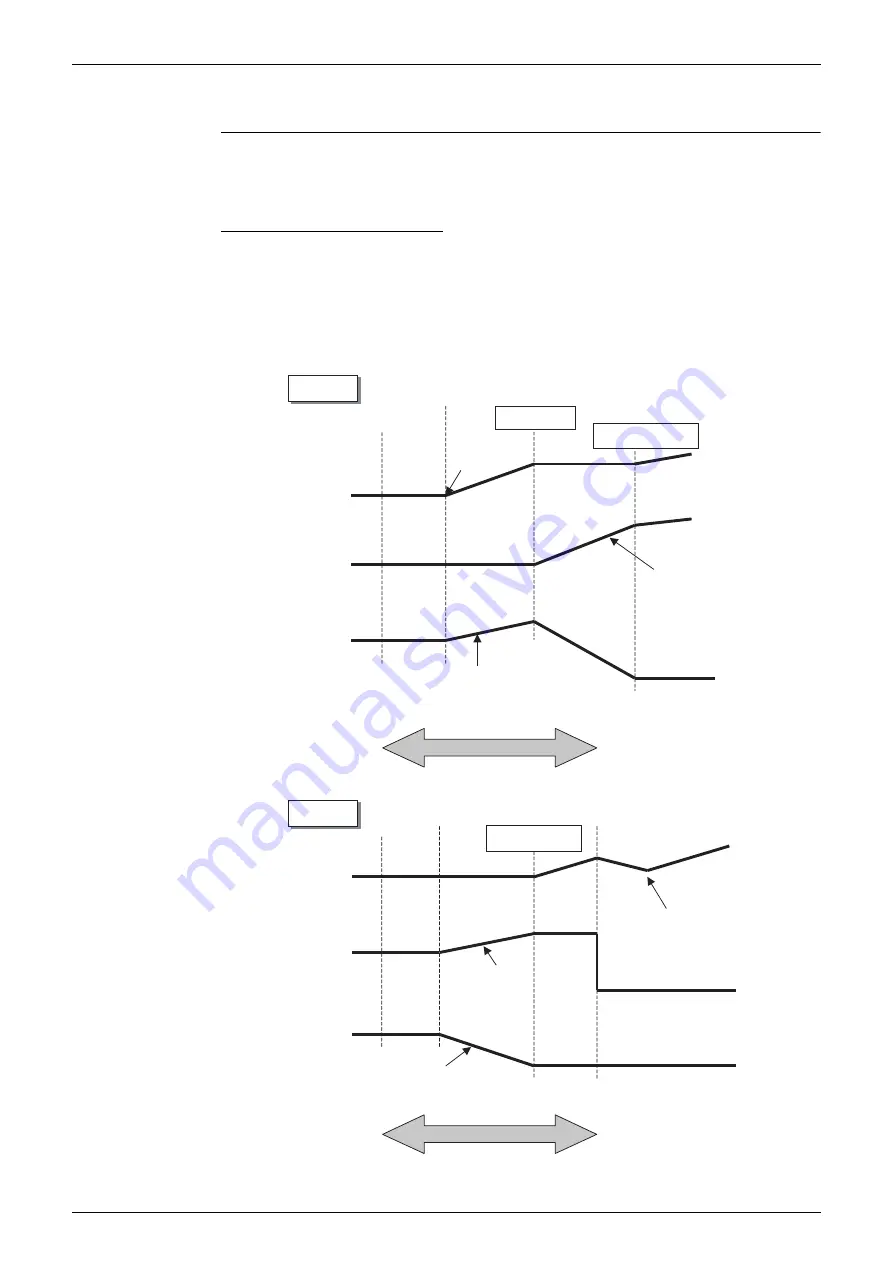
Check
SiME332106E
278
Part 6 Service Diagnosis
6.5 Refrigerant Overcharge Check
CHECK 6
In case of
VRV
Systems, the only way to judge as the overcharge of refrigerant is with operating
conditions due to the relationship to pressure control and electronic expansion valve control.
As information for making a judgment, refer to the information below.
Diagnosis of refrigerant overcharge
1. High pressure rises. Consequently, overload control is conducted to cause insufficient
cooling capacity.
2. The superheating degree of suction gas lowers (or wet operation is performed).
Consequently, the compressor becomes lower in discharge pipe temperature despite of
pressure loads.
3. The subcooling degree of condensate rises. Consequently, in heating, the temperature of
discharge air through the subcooled section decreases.
Cooling
High pressure
Low pressure
Frequency
High pressure
gradually rises with
increase in
frequency.
Subcooling degree
becomes higher.
(Liquid connection
pipe temperature
lowers.)
Low pressure rises due
to decreased
compressor output.
Higher degree of overcharge
(Degree of overcharge)
Proper amount
To maintain low pressure, frequency
increases under the capacity
control.
Frequency comes to
the minimum level.
High pressure
dropping control
(Low pressure is
maintained at a
constant level.)
High pressure
Low pressure
Frequency
Heating
The outdoor unit electronic expansion valve
is closed due to the overload control.
Frequency comes to
the minimum level.
(High pressure is maintained
at a constant level.)
Low pressure rises
due to decreased
frequency.
To maintain high pressure,
frequency decreases under the
capacity control.
High pressure drops or rises
immediately after the overload
control is complete.
Low pressure drops due to
closed outdoor unit
electronic expansion valve.
Hot gas bypass is activated
for low pressure protection,
i.e., hunting at low pressure.
Higher degree of overcharge
(Degree of overcharge)
Proper amount






